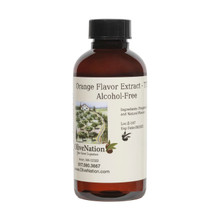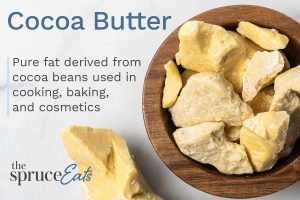Butter Flavoring
Butter flavoring is a great way to add a rich buttery flavor to baked goods, icings, and other desserts. It’s also used in some processed foods as a way to add a savory touch without adding fat.
However, it is important to know what exactly it is that’s in these products. They can contain dairy ingredients, so it’s best to read the ingredient list.
Product Description
Natural butter flavoring is a water-based liquid with lots of butter flavor that can be used to add a hefty dose of buttery goodness to products like microwave popcorn and commercially produced baked goods. The product is also low in calories, making it a great alternative to real butter in baking.
The most common type of natural butter flavoring is the emulsion, which is a water-based blend of isolated compounds found in butter and other dairy products. These ingredients are combined with water and other flavors and ingredients to create a liquid that delivers a rich, buttery taste without all the fat.
One of the biggest challenges in implementing such a blend into products is finding the right concentration for each application. This is where a good flavor consultant can help.
While it’s not a perfect science, there are certain components that will produce the best flavor when combined together in the correct proportions. The most common compounds used are diacetyl and acetoin, which are the byproducts of sugar fermentation in cultured dairy products such as butter and buttermilk.
It’s not uncommon to see the same ingredients listed on different ingredient labels, and it’s always a good idea to read all the details to make sure that you’re getting what you pay for.
It’s also a good idea to check out the ingredients list to see if the product you are considering contains something that you are allergic to. In addition, it is a good idea to ask the manufacturer if there are any other ingredients that you should know about before making a purchase.
Ingredients
Natural butter flavoring is an ingredient used to add a rich buttery flavor to baked goods and frostings. It is a great alternative to real butter and can be used in low-calorie recipes.
There are many types of natural butter flavoring available on the market today. Some are oil-based while others are water-based. There are even some that are Kosher Parve, which means they do not contain dairy products or other ingredients that may conflict with certain dietary restrictions.
Unlike butter extract, which is made from whole butter, natural butter flavoring isolates specific compounds that are found in the butter, such as diacetyl. These isolated compounds are then combined with water and other ingredients to make a flavoring that can be used in a variety of foods.
One of the most common ingredients in natural butter flavoring is diacetyl, which is sourced from either butter or soybeans. It is a highly concentrated liquid that can be mixed with water and other ingredients to create an imitation butter flavor.
The resulting liquid can then be used to add buttery flavor to baked goods, sauces, dressings, dips, and more. It can also be used to add a touch of buttery flavor to processed foods, including margarine and microwave popcorn.
It is a common ingredient in low-calorie cheeses, dressings, and dips. It is also a popular choice for baked goods because it can help you cut down on the number of calories in your food without sacrificing taste or quality.
When purchasing a natural butter flavoring product, it is important to read the label carefully. It is not always easy to determine whether a product contains dairy, but it can be done if you check the ingredients list.
A lot of processed foods have to indicate if they contain milk, so if you see Natural butter flavoring a natural butter flavoring product that says it “may contain milk,” it is safe to assume that it does contain some type of dairy ingredient. If you are vegan, it is best to avoid products that have any dairy ingredients at all.
Shelf Life
Natural butter flavoring is an alternative to butter that is used to add a sweet, buttery flavor to foods. It is often added to baked goods, microwave popcorn, and oil-based spreads because it is low in calories and contains no fat.
It is made by combining isolated compounds found within butter such as diacetyl and acetoin with water and other flavors and ingredients. It is a concentrated product and may taste stronger than real butter. It also has a longer shelf life than butter since it is not reconstituted like actual butter.
Some natural butter flavors are dairy-free, and others may still contain milk. You should read the label carefully before buying.
The main ingredient in these products is diacetyl, which is produced when lactic acid bacteria in the butter ripen. In order to get the flavor in a more concentrated form, these bacteria are fermented on special culture that is optimized for flavor production.
This process results in a concentrated and highly aromatic liquid that is called a starter distillate. It is made by a small number of manufacturers worldwide, and is often used in the sour cream butter industry.
Another popular butter flavoring is a vegetable oil-based flavor that is infused with herbs and spices to produce a more authentic buttery flavor. These extracts are usually very strong and have a distinctive taste, so they tend to be more expensive than other types of butter flavors.
These extracts are typically used to enhance the flavor of food and beverages, but they can also be used as a cooking ingredient. They can be stored for a long time, and are great for adding flavor to dry herb mixes.
They are also commonly used as a substitute for other flavorings in foods and beverages. They are often used to create a sweet, creamy flavor in soups, dips, and sauces.
These flavors are available in a variety of brands and are often sold in bulk. They can be purchased at grocery stores, or online. They are also widely available in many different forms, including oil soluble flavors and powdered extracts.
Safety
Butter flavoring is a popular food additive that can add a smooth, rich, and creamy texture to foods like toast, cookies, popcorn, cakes, and ice cream. It also provides a rich buttery flavor to savory sauces, dressings, and other recipes.
Unlike artificial butter flavoring, which is chemically produced through processes, natural butter flavors are made from diacetyl and acetoin, byproducts of sugar fermentation in cultured dairy products like cultured butter, buttermilk, and sour cream. Both compounds are generally recognized as safe by the FDA.
The government has deemed the compound safe for human consumption because it is relatively low in levels and routes to the stomach rather than the lungs. However, some people are allergic to the substance and children may be hypersensitive to it.
Because of its strong flavor, it is often used in alcoholic beverages as Natural butter flavoring a flavoring or aroma. Its presence in these products has led to controversy.
In 2000, workers who handled large amounts of butter flavor were diagnosed with bronchiolitis obliterans — a lung disease known as “popcorn lung.” The U.S. Department of Health and Human Services took action and instituted new guidelines that require manufacturers to control the handling of diacetyl, acetyl propionyl, and acetoin in order to minimize the risk of illness.
Since the early 2000s, manufacturers have developed safer methods of manufacturing and handling butter flavor. They also have a new list of Generally Recognized as Safe ingredients to ensure that their products are safe for consumers.
The FDA doesn’t require that flavor companies disclose each ingredient they use in a product, but they have an extensive safety program to help ensure that products are safe for people. The FDA has a panel of scientific and medical experts who review every new flavor ingredient that is brought to market. These experts make recommendations to the FDA about whether or not a particular flavor substance is safe for human consumption.
The FDA’s safety program ensures that all new flavor substances meet rigorous standards before they can be included in food and beverage products. This is an important step to maintaining the health and well-being of consumers.

